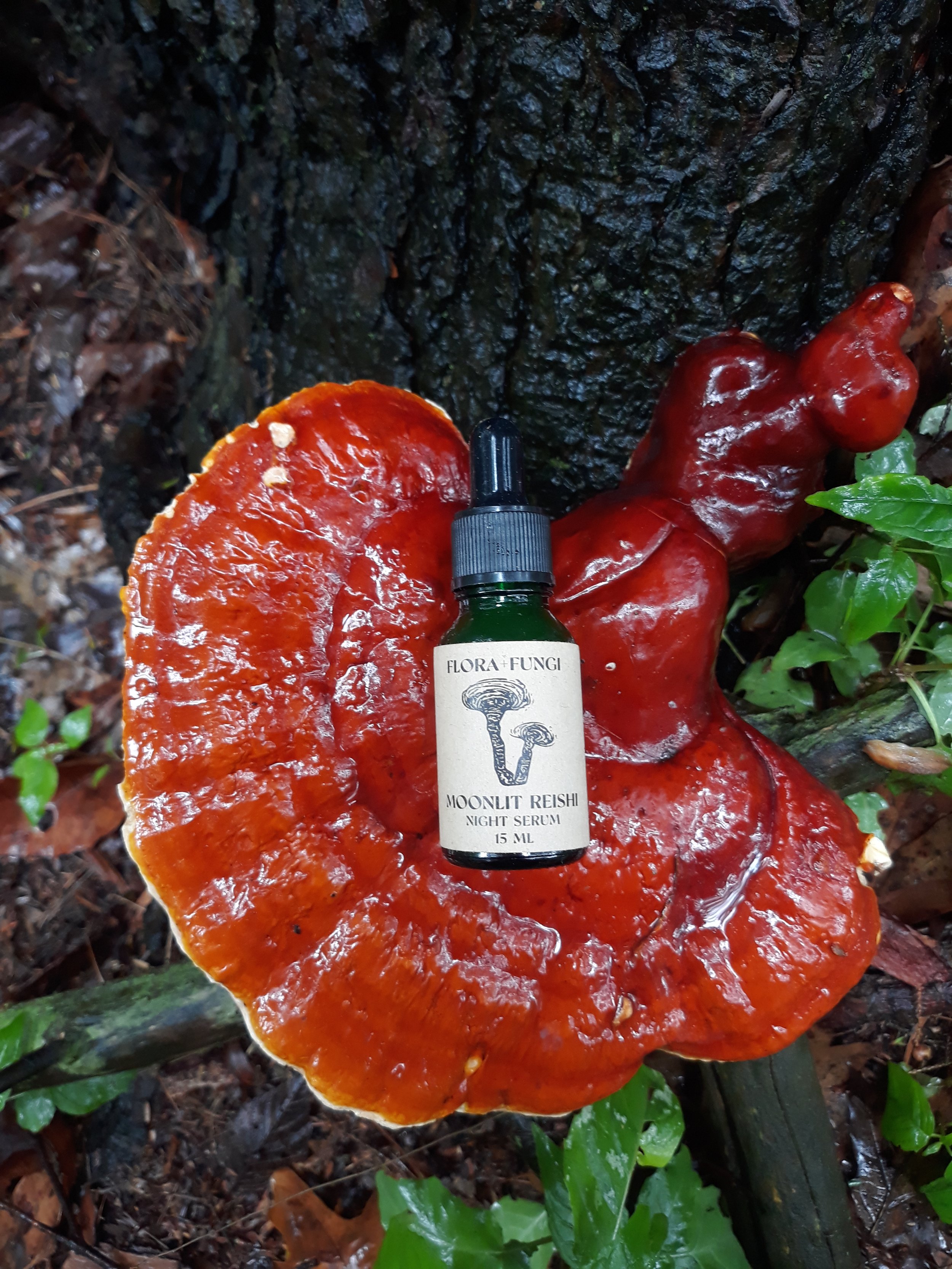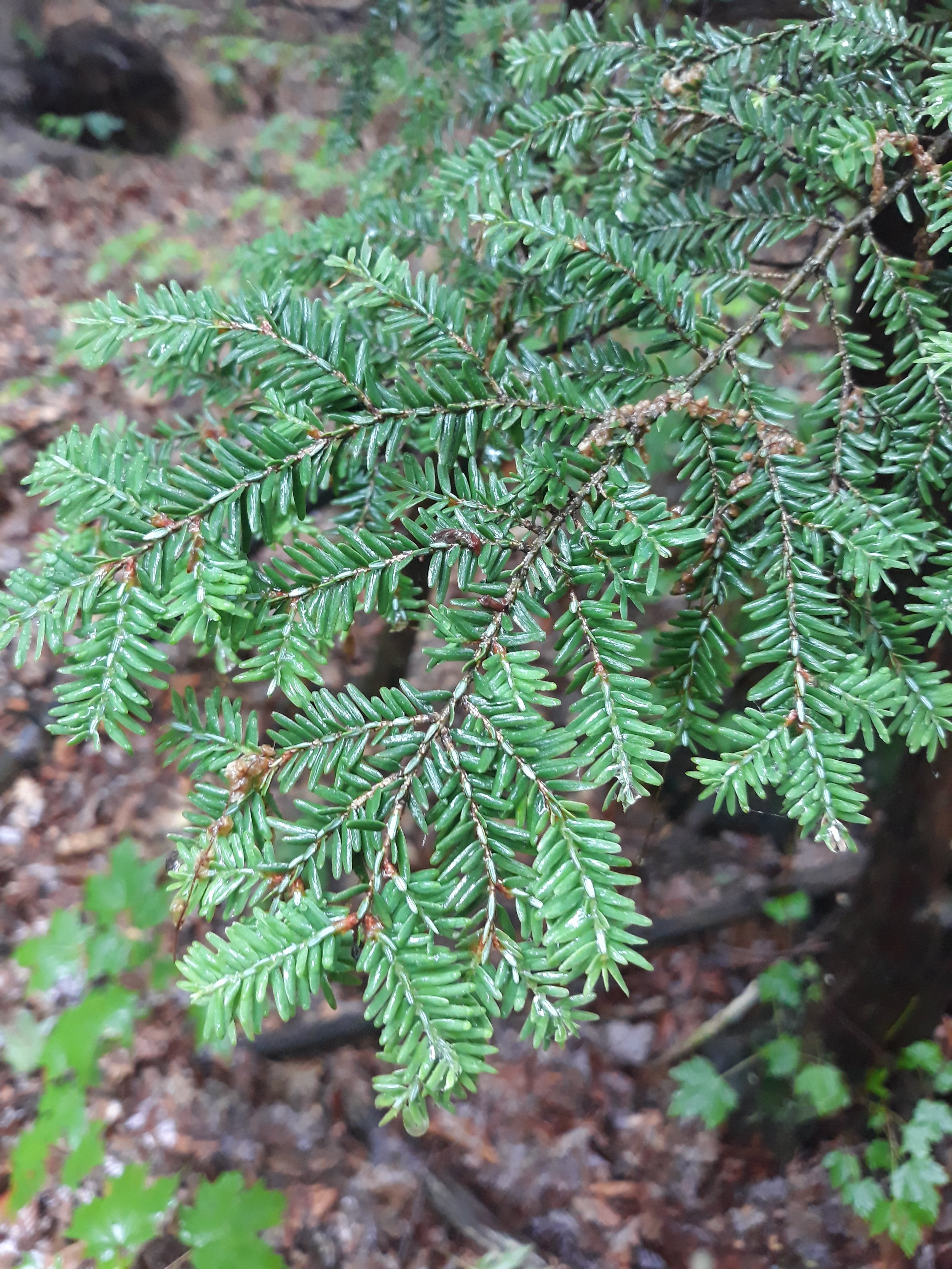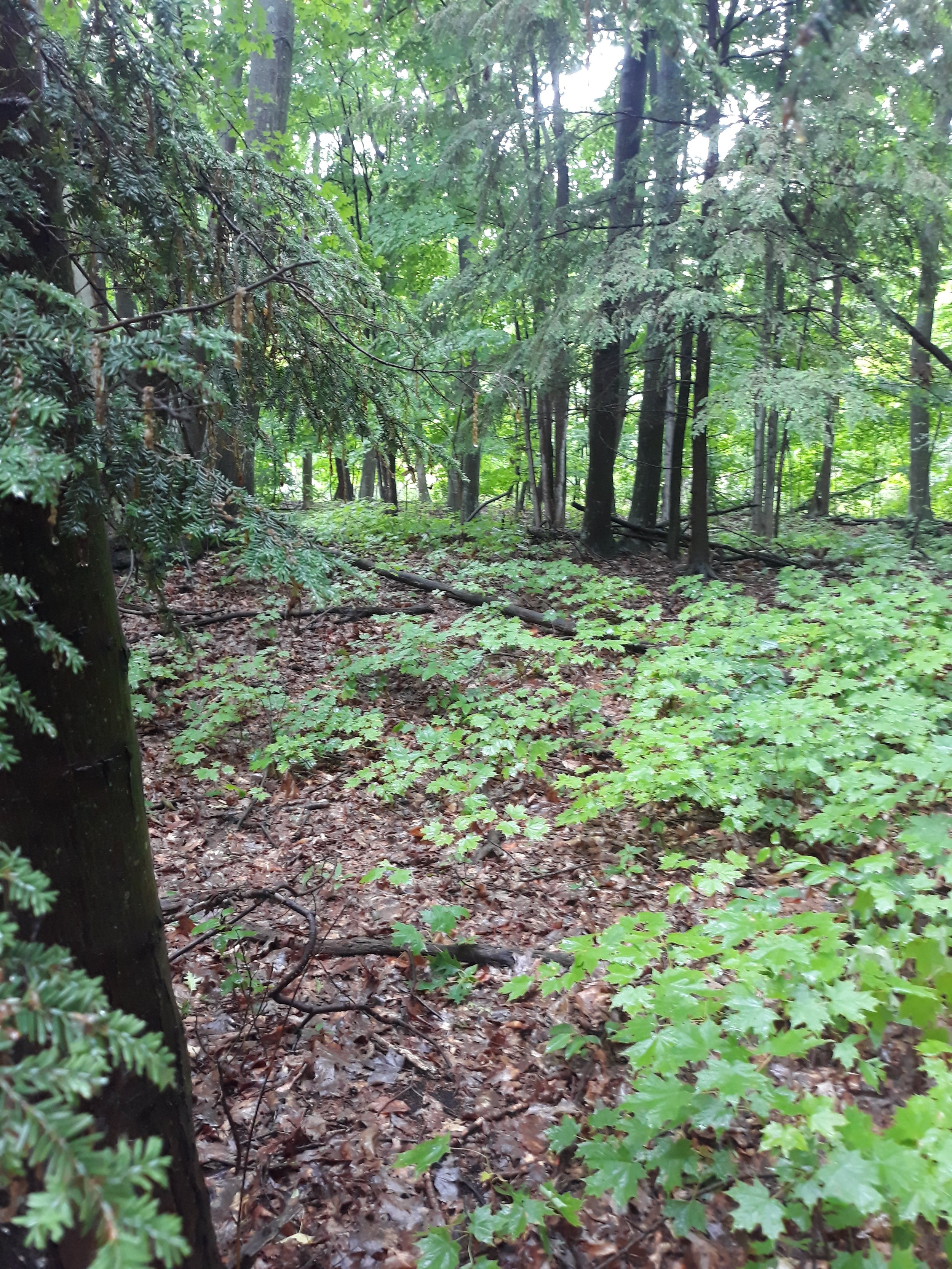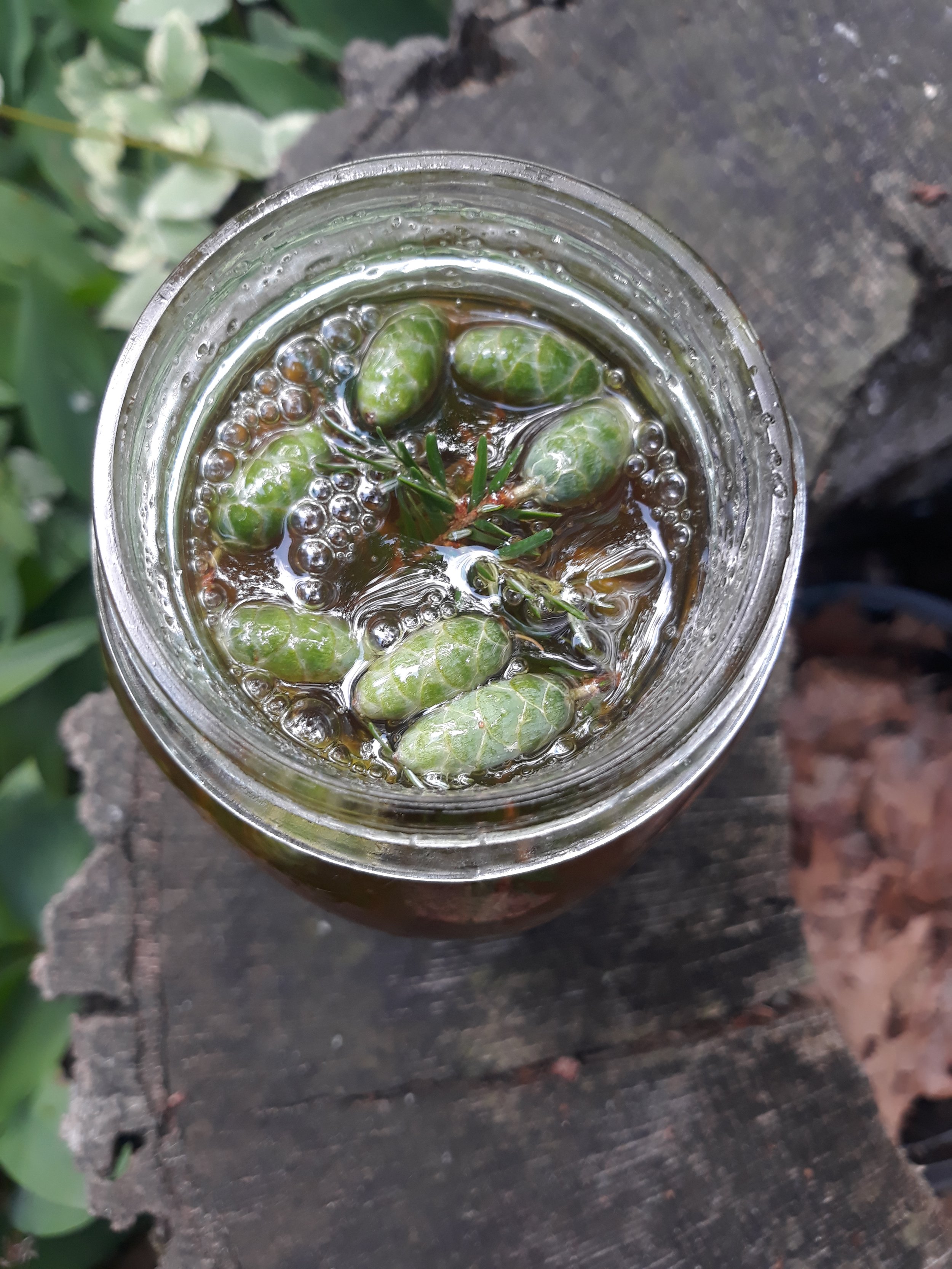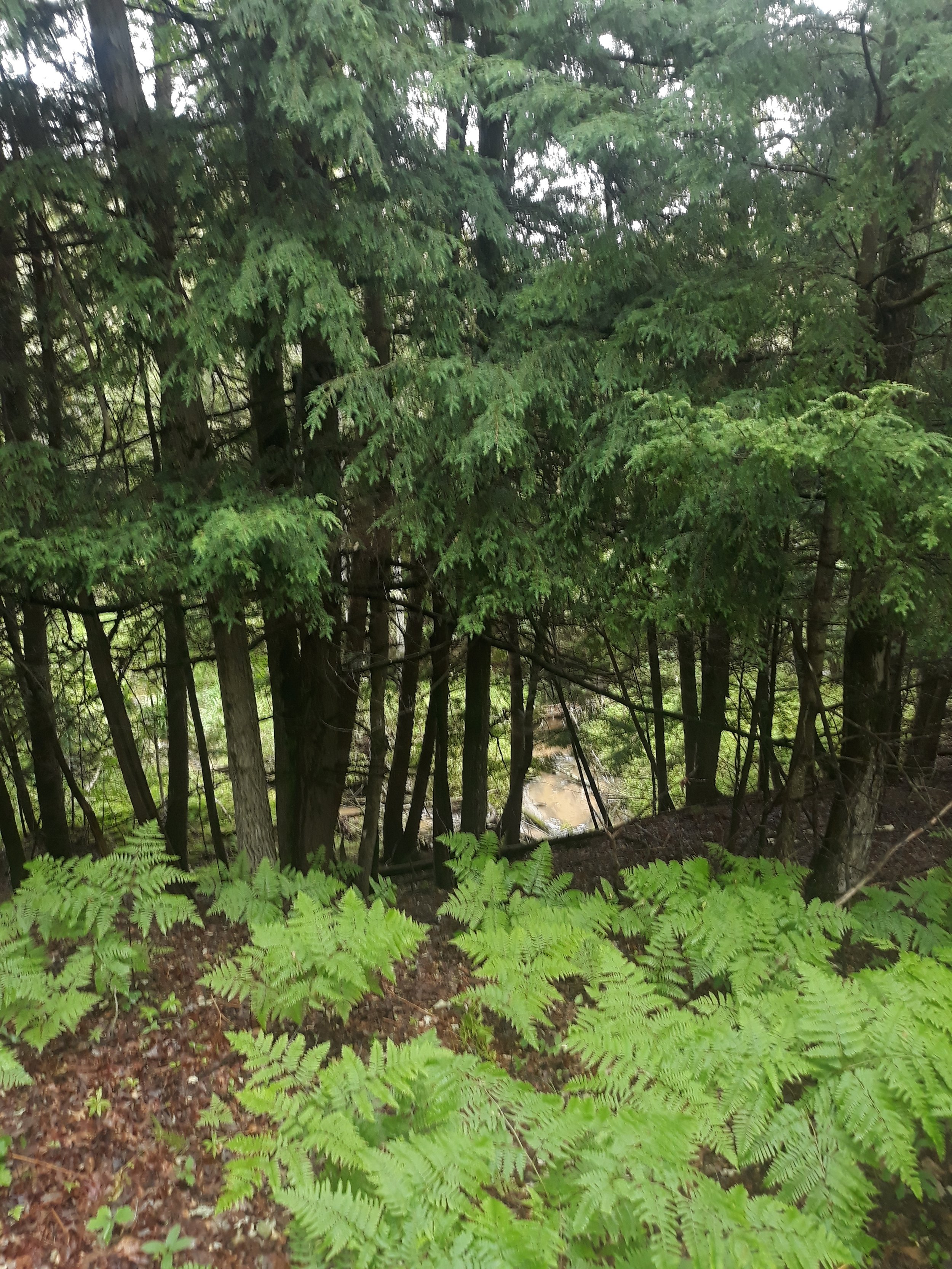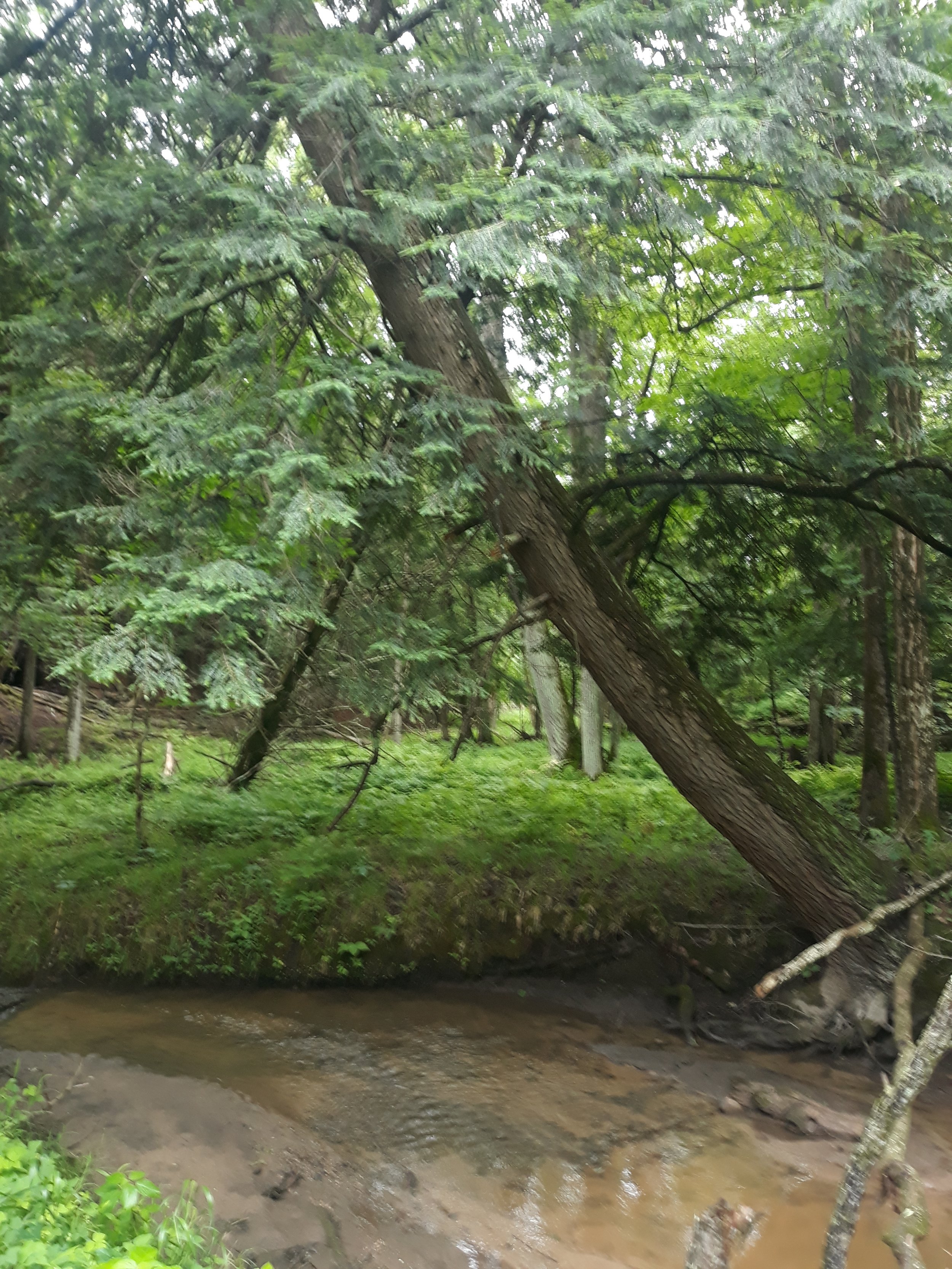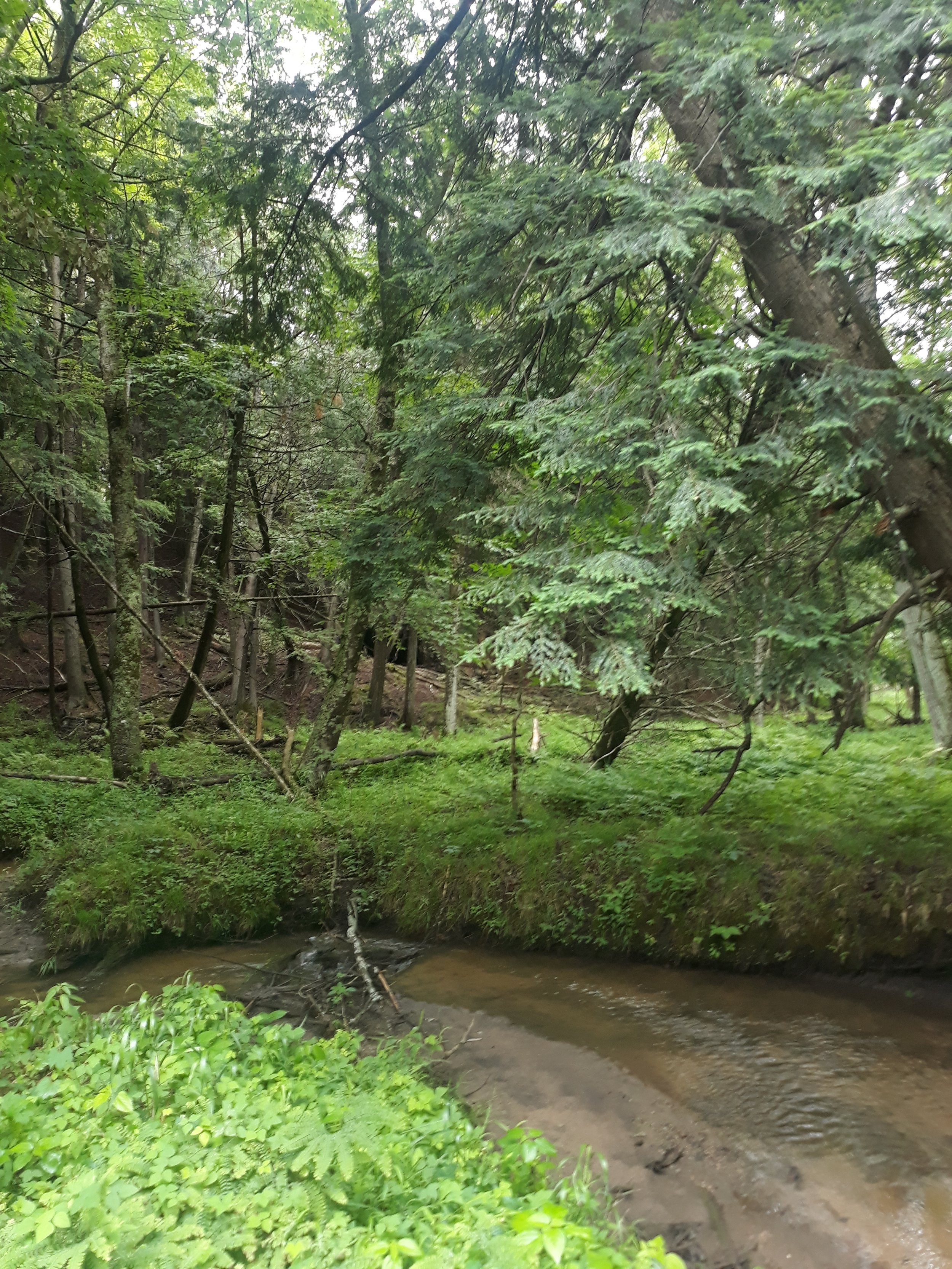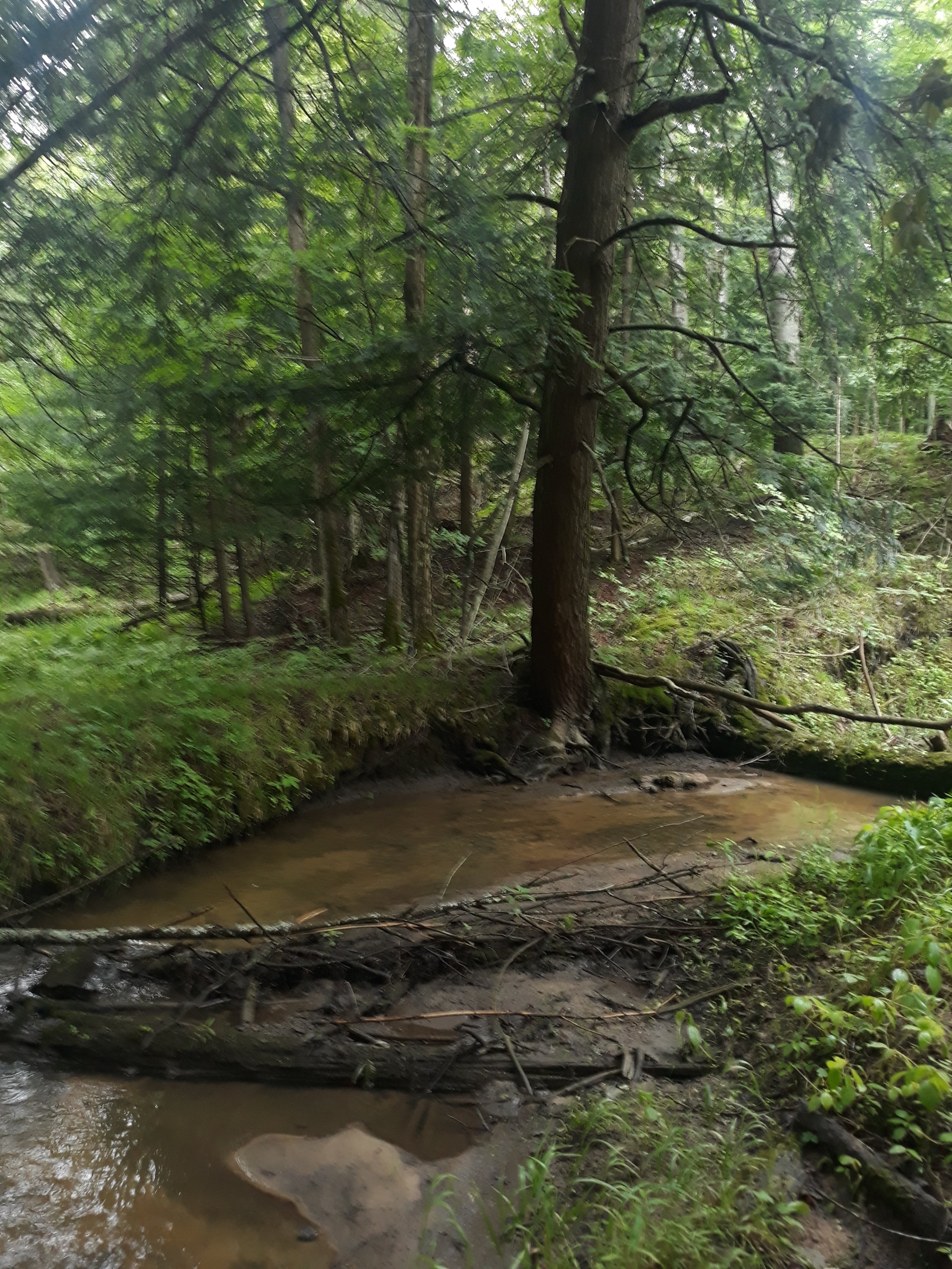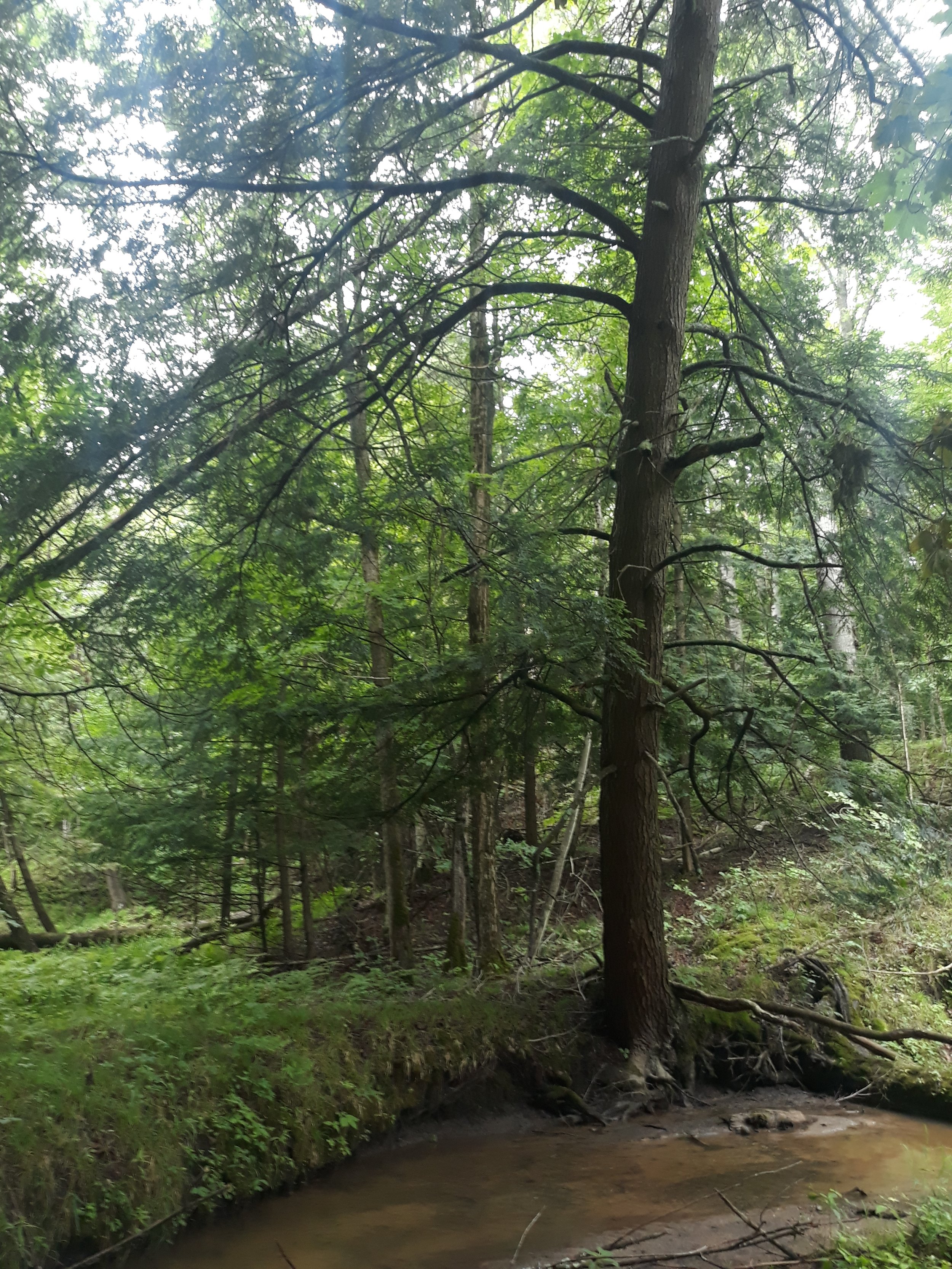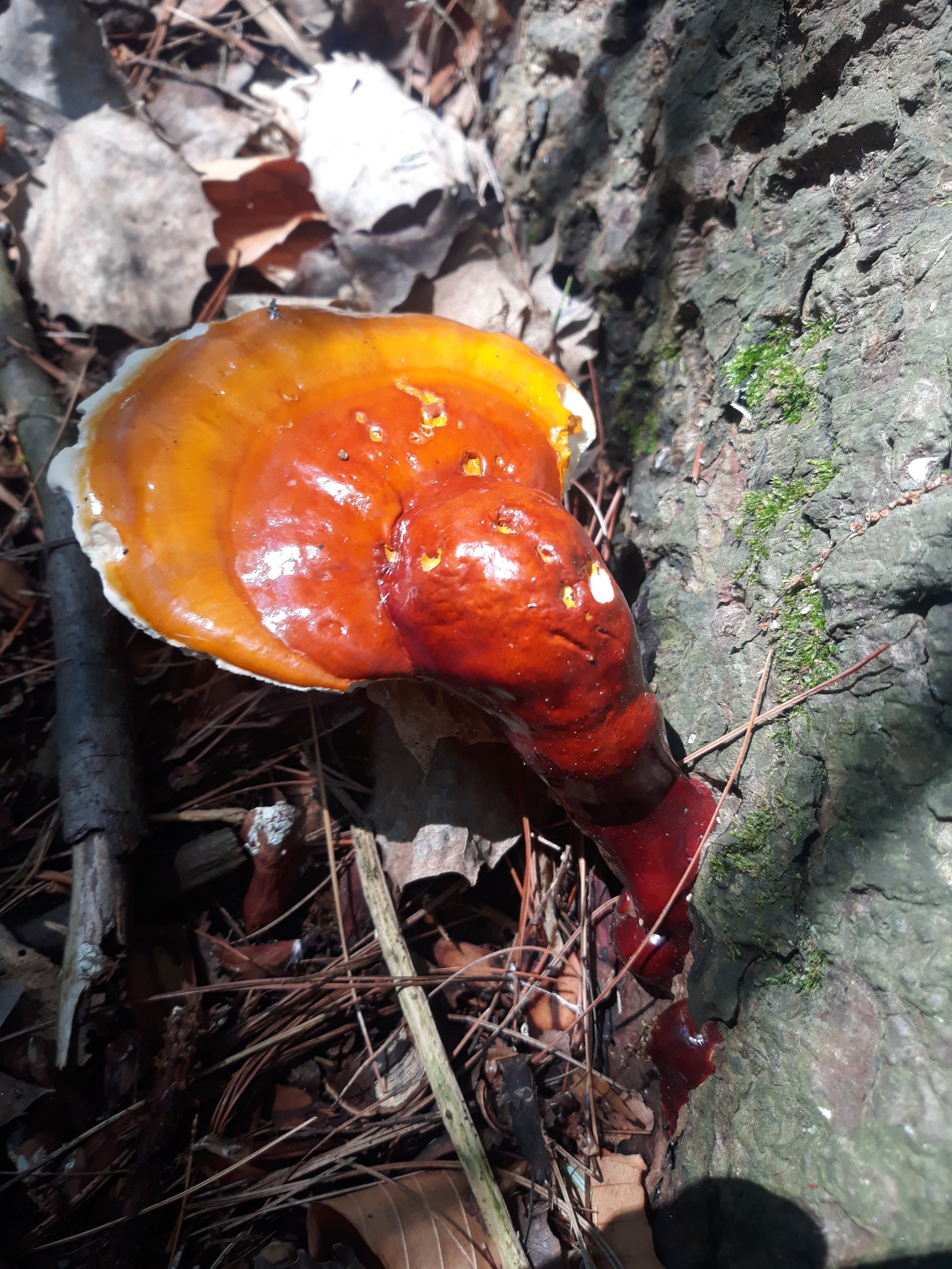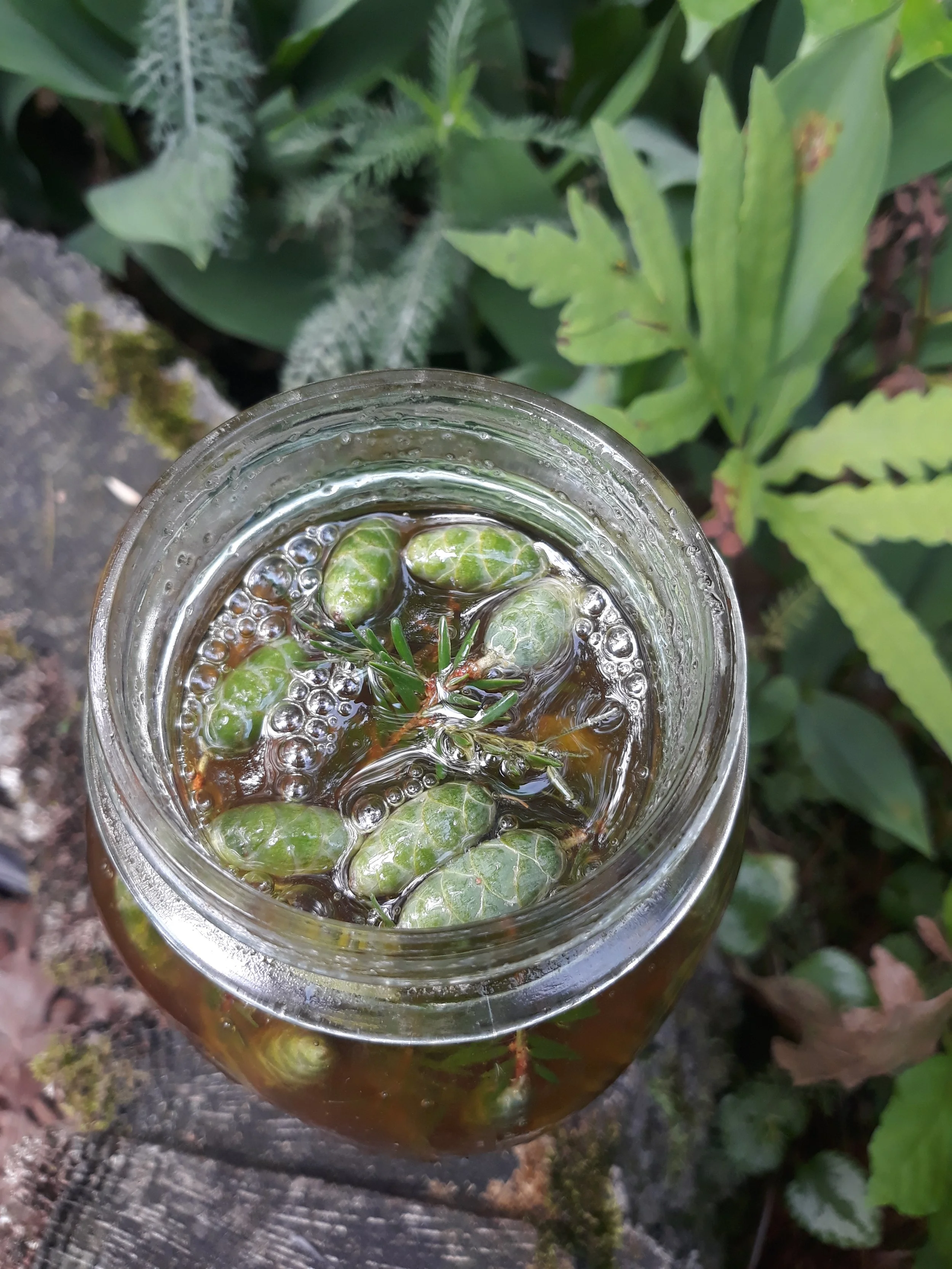Tree Medicine: Eastern Hemlock/Tsuga Canadensis
The Tsuga genus contains 9 members globally, with 4 of those 9 native to North America. In Michigan we find one native member of this genus- tsuga canadensis (Eastern Hemlock). Often found growing near white pines, this tree can easily be mistaken for a white pine by the untrained eye, as they both share many characteristics- height, growth shape, fissured bark on older specimen, etc. This conifer is worth learning to differentiate from white pine, as it is the host tree to ganoderma tsugae (Hemlock Reishi Mushroom)! Commonly found in moist woodlands, often on the edges of small streams growing near Pinus Strobus and Thuja Occidentalis.
Family: Pinaceae
Subfamily: Abietoideae
Genus: Tsuga
Species: Tsuga canadensis
Various species of Tsuga, including tsuga canadensis, have been used by various indigenous groups of North America, including the Abenaki and Iroquois to treat rheumatism, bronchial maladies, colds and fevers. The needles are exceptionally high in vitamin C and often made into a delightful tea. The crushed leaves can be applied as a poultice to skin to soothe itching and relieve pain.
Pharmacological properties: analgesic, anti-inflammatory, antiseptic, and febrifuge. Chemical constituents include: isobornyl acetate, α-pinene, camphene, limonene, piperitone, and manool.
Below: photos of Eastern Hemlock in its natural habitat,along with Ganoderma tsugae (Hemlock Reishi) fungi which are found only on Tsuga canadensis.
Eastern Hemlock/Tsuga Canadensis:
Anishinaabemowin: Gaagaagewanzh “Porcupine-his tree”
Size: Large tree, often 70-100ft tall. Straight trunk, massive pyramidal crown. Very slow growing, trees often take up to 200 years to reach maturity and may live for up to 600 years.
Needles: Deep green with white 0.5-1.5 cm long, spirally arranged around twigs, bottom paler with two white lines (stomata) down the length of the needles. Hemlock are ill suited for use as Christmas trees or evergreen decor since the needles drop off the branches as soon as they begin to dry up. Shortest needles of all the conifers.
Bark: Reddish brown-purplish gray. Older trees display deeply fissured bark that appears very similar to the bark of White Pine. Younger trees have smoother bark lacking the fissures which is more of a purple-gray.
Cones: 3mm long young cones appear on the tree in spring and ripen in autumn. Cones persist on the branches until new cones are developed the following spring.
Habitat: Often found near water- along lakeshores, streams and in conifer swamps or in stands of northern hardwoods (maple, beech, basswood, birch). Prefers moist cool sites. Typically, few plants will grow beneath hemlock stands, as the falling needles acidify the soil.
Distribution: Common throughout Michigan.
Eastern Hemlock Sugar Scrub
Hemlock is an incredibly aromatic tree and makes a great choice use in bath products where the hot water will release the volatile oils to add to the aromatic experience. Sugar scrubs are one of these quickest and easiest cosmetics to make, and are also a great base for showcasing bioregional botanicals. For this scrub, we will be using Tsuga canadensis/Eastern Hemlock. Plenty of different evergreens could be used for this scrub, but Eastern Hemlock has one distinct advantage- the needles will fall off the twigs once they dry unlike most other evergreens. Spruce would be the most difficult to use in a scrub, the needles are extremely hard to remove- Black Spruce has the softest needles of the spruce family if you would like to try to use spruce. Balsam fir would also work well, although you may want to let the needles dry on the branch and then slice them off as close to the twig as possible. To dry hemlock, loosely fill a paper grocery sack with branches- don’t pack them, make sure there is air flow between them, fold the top and place the bag out of the way to dry for a week or so. When they’ve dried they will have fallen to the bottom.
As with any cosmetic product, there are a spectrum of possibilities- sugar scrubs can be thick, or more liquid-oily, have large or fine granules- it is all about your preferences. Take this recipe as a basic guide- feel free to experiment and adjust the proportions as you like. I personally try to keep the oil on the low level because I have a septic system at home and need to avoid excess oil going into the system. You can blend the scrub in a bowl, or a food processor - the latter will help make the texture finer, for a thick granule type scrub mix by hand.
1 cup sugar (Florida Crystals raw sugar is great)
½-1 cup oil (coconut will make it a stiff scrub when the oil cools, something like avocado or olive oil will make it slightly more viscous. You can also melt cocoa, or other butters in with the oil which will create thicker consistency in the final product.You may even want to make a way more viscous scrub with equal parts oil to sugar depending on your preference. You can also use a botanically infused oil for this!)
¼- ½ cup powdered Hemlock (or other evergreen needle) (the more you add the more intense the scent and color will be. Start low and add until you are happy with the result)
Optional- Several drops of essential oil ( I highly recommend checking out The Tisserland Institute’s Essential Oil Safety guidelines if you choose to use essential oils in your products. Essential oils are wonderful ingredients, but they are indeed potent and require care in application. Some essential oils are not recommended during pregnancy, others can cause phototoxic reactions to skin when used before sun exposure, others can be irritating if used above a certain level, some are toxic to animals.. There is great safety information available and it is not overly complicated to figure out which oils you like and review their usage level, safety considerations and other things like sensitizers they may contain so you can be sure you are using them beneficially. )
Powder hemlock needles in coffee grinder. In a small bowl combine sugar and powdered needles, add oil (if using coconut oil, melt before combining). Combine thoroughly, and then add a few drops of essential oil if desired and mix again. Transfer mixture to a suitable vessel- mason jars are an easy option that you may already have on hand. You can always add other herbs and spices to augment the scent. Evergreens pair well with more exotic scents like nutmeg and cinnamon.
When using, try to avoid introducing water into the jar as it will eventually introduce bacteria.
A pot of herbs ready to be transformed into a medicinal elixir for respiratory health
Tree Guardian Cough Syrup-
Evergreens medicinal virtues make them a natural choice for combating respiratory woes. Which plants you use is up to you! Feel free to add in other plants for respiratory and immune support. For this recipe we used about a ¼ cup of each of the following plants: Red pine needles, balsam fir needles, hemlock needles, wintergreen, plantain, mullein, peppermint and rose hip.
Ingredients:
2 Cups Water
2 Cups plant material
½ cup honey
¼ cup brandy
Directions: Add plant material to water and simmer gently for an hour or so. Cook this mixture down until it is very concentrated and only about 1 ¼ cups of liquid remain. Remove from heat and strain. Add honey and brandy and stir until honey is dissolved. Brandy acts as a preservative. Store in the fridge. Take by the spoonful for acute cough and cold issues or enjoy over ice cream or in soda water for a forest flavored treat.
Medicinal mushrooms may also be added to this, but in that case we would recommend making a decoction of the mushroom alone and then using that liquid for the base of the syrup after the mushroom has been filtered out- mushrooms require more heat/cooking time for many of the beneficial compounds to be released from the hard cell walls of the mushroom.
Another easy treat you can make with hemlock is an infused hemlock honey. Pack a jar with hemlock clippings and cover with honey, allow to infuse for a few weeks minimum, you may need to burp the jar from time to time as the contents within ferment. Using green cones will give you a more tart almost citrus like flavor to the final honey, while using crushed needles will give a more evergreen flavor. Use in tea, baked goods or over ice cream-vanilla is great to showcase the flavor of evergreens without the flavor being too overwhelming.
Eastern Hemlock is a featured ingredient in the following products:
Moonlit Reishi Night Treatment Serum

